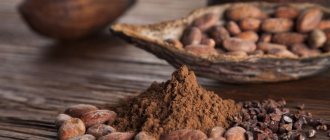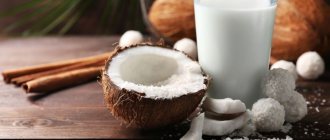Instant coffee is a low-calorie product that can give you strength and energize you. Attempts to produce this drink were made in the 18th century. in Britain by order of the War Office. By the beginning of the 20th century. Belgian chemist J. Washington, interested in the remnants of coffee plaque on the walls of the Turk, developed a technology for creating an instant drink.
By 1909, under his management, mass production of the Red E Coffee brand began.
What kind of coffee is there? Kinds
On July 24, 1938, conveyor production of the drink by Nestle began in Switzerland. The J. Washington company ceased to exist in 1961. Instant coffee, the calorie content of which varies from 2 to 270 kcal per 100 g, is made from a dry concentrate extracted from natural beans, sometimes robusta.
Each manufacturer has unique production methods to preserve aroma and flavor properties. Instant coffee, according to statistics, is one of the best-selling products.
The ranking of countries consuming the largest amount of instant coffee compared to natural coffee includes:
- Australia – 75%;
- Russia – 70-80%;
- Eastern Europe – 50%;
- Middle Eastern countries – 40%.
To produce instant drinks, the following are usually used:
- exclusively robusta;
- a mixture of robusta and arabica;
- exclusively Arabica.
Unscrupulous manufacturers include ground chicory, chestnut, and wheat grains in the composition.
Each of the 3 types of instant coffee on the market (powdered, granulated and freeze-dried) has its own production technology:
- evaporation method (spray dry);
- vacuum drying with pre-freezing (freeze dry).
In the first case, a highly concentrated drink is sprayed under the influence of a stream of hot air. After the moisture evaporates, coffee powder is formed. With additional steam processing of the powder, granulated coffee is obtained by combining small particles. Due to the additional production step (humidification), granulated coffee is more expensive than powdered coffee.
The freeze-dry method consists of the following main steps:
- cooling the coffee extract to -6⁰;
- subsequent application of the raw material in a thin layer on a steel drum or belt and freezing to -40⁰;
- grinding, sifting formed slabs of ice;
- separating coffee granules from liquid.
This method is used to produce an expensive and higher quality type - sublimated. Due to the absence of heat treatment, the method allows you to maximally preserve the taste, aroma and beneficial properties of natural grains.
The freeze-dried variety contains mostly a high percentage of caffeine, which is an indicator of good quality. Freeze-dried coffee granules are smooth and shiny. Whatever the production method, processed coffee does not fully convey the rich and vibrant aroma of the beans.
Each manufacturer has its own secrets for flavoring dry drinks. For more expensive types, in particular freeze-dried, the essential oils of the grains are collected using a special technology and added to the dry product. For low-cost types, artificial flavors are used.
Sometimes you can find decaffeinated instant coffee on sale. During the production process, coffee extract is passed through carbon filters. This method allows you to retain caffeine molecules. Due to additional costs, the price of this drink is higher.
Calorie content of instant coffee
If we consider the data provided by American scientists, it is worth noting that one cup of instant coffee drink contains approximately 2 calories. It should be noted that exactly 2 calories in an instant drink are contained in one teaspoon of coffee powder. If the drink is made from coffee beans, then its calorie content becomes zero.
Consider a caffeine-free drink, its ratio will be: one teaspoon of powder equals four calories.
With added sugar or sugar substitutes, one cup of this relaxing and energizing drink contains no more than 700 calories.
History of coffee
It should be noted that this drink originates in Ethiopia, but some sources claim that it appeared earlier in Yemen. Muslim residents did not want to export coffee trees, but with the help of the Arabs, direct export of beans to India began.
Already in 1616, Dutch businessmen brought the coffee tree to Europe, and a little later, when they saw what kind of harvest could be obtained from it, they began to plant it in large quantities.
Endless coffee plantations
The French military subject began to grow coffee trees on his own after he managed to get some cuttings. The trees, which were carefully cultivated in a botanical garden in Paris, later grew into a coffee plantation.
Already in 1727, thanks to this lieutenant living in Brazil, coffee trees were imported, thanks to which the first coffee plantations were founded. This happened in 1800, after which this country became the most popular in the production of this delicious tonic drink.
Energy value
Natural coffee beans have a unique composition. There is still no method capable of conveying all the benefits, aroma and taste of grain.
Instant coffee, the calorie content of which varies from manufacturer to manufacturer, contains on average:
- freeze-dried – from 90 to 140 kcal per 100 g of dry product;
- granulated - on average 38 kcal/100 g;
- powder – from 2 to 9 kcal/100 g.
Composition and calorie content of instant coffee
The amount of proteins, fats and carbohydrates also differs. The table shows examples of analysis of calorie content and nutritional supplements of some well-known brands in 100 g of dry product.
| Name | Calorie content, kcal | Proteins, g | Fats, g | Carbohydrates, g | 1 tsp. (2.5 g), kcal |
| Carte Noire Classic | 100 | 14 | 0.04 | 10.3 | 2.5 |
| Egoiste | 99 | 1.14 | 3.6 | 1.9 | 2.4 |
| Jacobs Monarch | 102 | 14.5 | 0.45 | 10 | 2.55 |
| Nescafe Gold (powder) | 2 | 0.2 | 0 | 0.36 | 0.04 |
| Davidoff | 180 | 17.12 | 3.6 | 19.7 | 4.5 |
| Tchibo Exclusive | 170 | 15.3 | 5.6 | 1.4 | 2.25 |
The calorie content of the finished drink based on instant coffee is increased by additives such as:
- sugar: 1 tsp. (8 g) – 32 kcal;
- milk: 20 ml (1 tbsp.) 1.5% fat content – 9 kcal, 2.5% fat content – 11 kcal, 3.2% fat content – 12 kcal;
- condensed milk: 30 g (1 tbsp.) – 95 kcal;
- cognac: 30 g – 72 kcal;
- liqueur: per 30 g from 60 to 100 kcal;
- syrup: 30 g – 60-80 kcal.
The dry drink may contain up to 10% ash and up to 4.2% caffeine.
Calorie content of coffee with additives
It is rare to find lovers of black coffee without additives: milk, cream, sugar, spices - all this gives the drink new dimensions of taste and aroma, and at the same time - calories.
Milk and cream
Cream perfectly softens the taste of coffee, but significantly increases the number of calories.
Usually about 30 ml of milk or cream is added to a cup of black drink. If milk has a fat content of 2.5%, it will add another 16 kcal to coffee; if it is fattier, 3.2% will add 18 kcal. The cream is twice as fat, i.e. will complement the calorie content of coffee by approximately 36 kcal.
Sugar
Sugar greatly increases the calorie content of the drink, a teaspoon of sugar has 24 Kcal, respectively, adding two tablespoons of sugar, we get 48 Kcal. A
teaspoon or stick bag with sugar contains about 5 grams of weight, which means that one such serving will make the drink more caloric by 20 kcal, and since one spoon is often not enough, this figure increases by 2 or even 3 times.
Condensed milk
Condensed milk is perfect for coffee, as it not only softens its taste, but also makes it sweet and, accordingly, more caloric.
This delicacy has an energy value of 320 kcal per 100 g, therefore, two teaspoons of condensed milk will add another 64 kcal to coffee.
Cognac
Cognac will enrich the taste of coffee and add additional calories to it.
Noble alcohol reveals the taste of even the most inexpensive coffee in a special way. However, taking into account that preparing proper coffee with cognac requires about 30 ml of the drink, and its energy value is 239 kcal/100 ml, this results in an increase of 69 kcal per serving.
Liquor
Lovers of coffee with liqueur understand that a tasty additive can cause extra pounds.
A sophisticated drink based on berries and spices will add about 60-90 kcal to a cup of coffee when adding 30 ml.
Syrups
A tablespoon will hold 25 grams of syrup, and a teaspoon will hold 10 grams; the calorie content of the drink will increase in proportion to this.
A sweet additive in the form of syrup flavored with chocolate, caramel or vanilla will increase the calorie content of coffee several times, because 2 teaspoons of the delicacy contain 78 kcal.
Spices
Almost all spices have a low calorie content, which will have a great effect on your figure.
But adding spices (cinnamon, cardamom, vanilla, ginger) to a hot drink will not only give it unique shades of taste and aroma, but will also have virtually no effect on the energy value - per teaspoon spices no more than 3.5 kcal. The exception is nutmeg - its calorie content per 10 grams is 5 kcal.
Calorie content of coffee 3 in 1
A standard 3 in 1 coffee bag is a mixture of coffee, sugar, milk powder
A sachet of 3-in-1 instant drink usually contains 20 grams of powder, and the calorie content indicated by the manufacturer varies from 80 to 100 kcal. It turns out that 100 grams of such coffee contains from 300 to 500 kcal, which is several times higher than the energy value of regular coffee.
The main component of the 3 in 1 drink is sugar; it contains about half of the total weight in a standard bag, which means its calorie content is 38 kcal. Coffee, as already mentioned, is a low-calorie component. The last component is cream, 100 grams of this product of plant origin contain 450 kcal, if there are 5-7 grams in a bag, then it adds 30-35 kcal.
Aromatic and flavoring additives increase the calorie content of such coffee even more.
Unfortunately, an unscrupulous manufacturer makes an already high-calorie instant drink even more harmful to the figure, replacing natural coffee with wheat, oak acorns, chestnuts and other cheap raw materials. Flavoring additives such as “chocolate”, “condensed milk” or “hazelnut” increase the calorie content of 3 in 1 coffee by an average of 15-40 kcal per serving; preservatives, often not listed in the composition, also add “weight”.
Instant coffee lovers do not have to worry about extra pounds and enjoy the taste and aroma. However, it should be remembered that any additive affects the calorie content of the drink. Drinking a few cups of coffee a day with milk, cream or sugar can provide up to 30% of your daily calorie intake and should be taken into account.
Beneficial features
Instant coffee made from natural high-quality raw materials contains a certain amount of vitamins and oils.
In addition to caffeine, small amounts may include:
- phosphorus;
- iron;
- sodium;
- calcium;
- antioxidants;
- vitamins B2 and PP.
When consumed in moderation, the drink can benefit the body. The caffeine concentration is different for each manufacturer: in 1 cup (250 ml) – 30-200 mg. This substance has a diuretic and invigorating effect, increases concentration.
Also, an instant drink can:
- activate enhanced brain function;
- prevent the risk of developing depression;
- improve mood due to an increase in the blood level of serotonin, the hormone of happiness;
- speed up digestion by increasing the acidity of the body;
- increase blood pressure, which is an advantage for people suffering from low blood pressure.
Depending on your health condition, the recommended intake of instant coffee is 1-2 cups per day. This amount contains the acceptable daily dose of caffeine.
Contraindications and harm
Poor quality coffee may contain additives that can harm the body:
- preservatives;
- stabilizers;
- dyes;
- carbonic acid;
- artificial flavors.
Abuse of the drink can lead to adverse consequences:
- Caffeine destroys the nervous system, leading to its depletion. In this regard, an instant drink will do much more harm, since the caffeine of natural beans is eliminated from the body after 3 hours, while that of a soluble drink is eliminated after 10 hours.
- Caffeine abuse is addictive. Without the next portion of the drink, the body will not be able to function fully. A person who has been drinking more than 2-3 cups of coffee a day for a long time, trying to eliminate the drink from the diet, experiences a loss of strength, a decrease in reaction speed, and headaches may occur.
- The diuretic property of coffee leads to dehydration. The drink removes important vitamins from the body (in particular, vitamins A, group B, PP) and minerals (such as calcium, potassium, iron). With prolonged coffee abuse, the skin becomes dull, prone to premature aging, and loses elasticity.
- Regular consumption of instant drinks in large quantities is one of the reasons for the development of cellulite. Caffeine provokes the production of adrenaline. Due to drinking the drink in excess of the norm, the body does not have time to process large volumes of adrenaline, which increases the risk of deposits appearing in problem areas. Instant coffee is characterized by a high level of pesticides, which lead to digestive disorders and provoke the formation of fatty deposits.
- During the production of instant coffee, as a result of prolonged heating, the carcinogen acrylamide is released, which, when entering the body in large quantities, according to scientists, causes the formation of kidney stones.
- An increase in acidity levels negatively affects the functioning of the gastrointestinal tract.
Doctors do not recommend drinking this drink for people suffering from:
- heart defects;
- hypertension;
- obesity;
- chronic diseases of the gastrointestinal tract, pancreas and gall bladder;
- pathologies of the genitourinary system.
Instant coffee is prohibited for use during pregnancy and for children under 14 years of age.
The value of coffee
Many experts are convinced that freshly brewed coffee made from ground beans is much healthier than an instant drink. But even the latter retains some of the useful micro- and macroelements.
Until now, minds from all over the world are actively arguing about the benefits and possible negative effects of an invigorating drink on the human body. And the component composition itself has not been fully studied.
One thing is certain, coffee contains enough caffeine, which is classified as an alkaloid of plant origin. Arabica coffee is considered the most popular variety of coffee. The caffeine concentration in it is average. But robusta contains between 1.8 and 3% caffeine. This coffee is much stronger.
If you drink coffee in moderation, as doctors require, the drink will bring exceptional benefits.
Beneficial features:
- stimulation of psycho-emotional activity;
- stimulating effect on the nervous system;
- increased heart rate;
- stimulation of mental abilities;
- increased performance;
- increased blood pressure;
- eliminating drowsiness;
- charge of vivacity and energy;
- antioxidant effect on the body.
Rating
When choosing a drink that is suitable for its aroma and taste, you should pay attention to the following quality indicators:
- information about the country of origin indicated on the label must correspond to the barcode information;
- 100% Arabica coffee contains less caffeine than Robusta coffee;
- Sublimated coffee is considered the most similar in aroma and taste to natural coffee;
- bread notes in the aroma indicate the addition of roasted barley;
- if the coffee smells like burnt cork, this indicates a violation of the production technology or the presence of over-roasted beans;
- granules must have a dense consistency, not stick together and completely dissolve in water, without the formation of suspensions and impurities;
- the composition must contain no foreign ingredients;
- If the color of the granules is too dark, it may indicate that the coffee is burnt.
Instant coffee, the calorie content of which in a freeze-dried drink reaches 270 kcal per 100 g, has its own characteristic taste and aroma, depending on the manufacturer. The table provides information about some of the most popular instant coffee brands.
| Name | Peculiarities | average cost |
| Carte Noire Classic |
| from 350 rub. for 95 g |
| Bushido |
| from 434 rub./50 g |
| Egoiste |
| from 340 rub./100 g |
| Davidoff |
| 259 rub. 70 g |
| Moccona |
| on average 214 rubles. for 95 g |
| Moscow coffee shop on shares |
| 219 rub. 75 g |
| Bourbon |
| from 319 rub. 100 g |
| Tchibo |
| from 200 rub. for 95 g |
| Ambassador |
| 200 rub. 95 g |
| Jacobs Monarch |
| 250 rub. 95 |
| Nescafe Gold |
| 220 rub. 95 g |
The advantages of instant coffee include low calorie content, ease of preparation, and affordable cost. Some coffee lovers prefer a softer instant drink to the strong and rich taste of natural beans. In all cases, it is important to follow the consumption rate so as not to harm the body.
Conclusions:
- Basically, the calorie content of the drink depends on the amount of granulated sugar added - 390 kcal per 100 grams of sand, 400 for refined sugar.
- For maximum convenience of counting, you can take a heaped teaspoon of granulated sugar for 30 kcal.
- Instant coffee itself has more calories than natural coffee, and a drink in a standard 200 ml glass with two sticks / refined sugar cubes / level spoons of sugar is 50 kcal.
- In an average portion of natural coffee ~200 ml and with two sticks / cubes of refined sugar / level spoons of sugar - 40-43 kcal.











